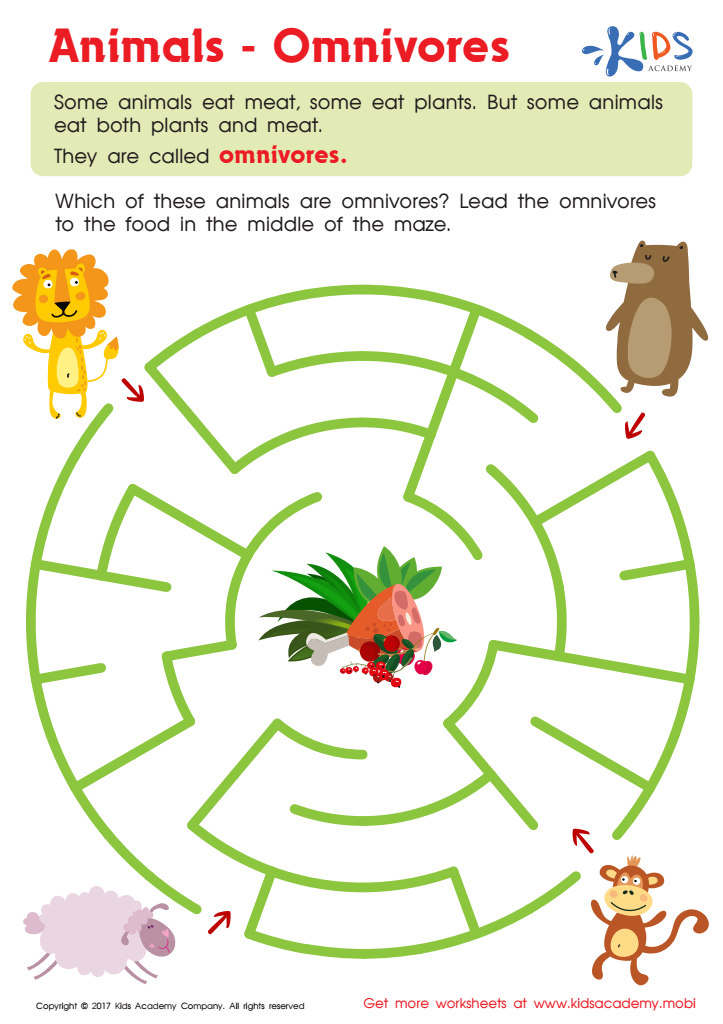Animal diet understanding Worksheets for Kids
1 filtered results
-
From - To


Omnivores Animals Worksheet
Question/Answer
What are some effective activities to train students’ Animal diet understanding skill when teaching them about Life Science?
Effective activities for teaching students about animal diets include interactive games like matching animals with their correct diets, creating food web diagrams, conducting virtual or real dissections to explore digestive systems, organizing role-play scenarios where students act as different animals searching for food, and designing projects where students research and present on specific animals' diets and their roles in ecosystems.
Why is the Animal diet understanding skill important for Grade 2 students?
The Animal Diet Understanding skill is important for Grade 2 students as it fosters early scientific thinking, introduces basic concepts of biology, nurtures empathy towards living beings, and teaches about biodiversity and ecosystems. It also encourages curiosity about the natural world, laying the groundwork for informed and responsible decision-making regarding environmental and animal welfare issues.
How to train the Animal diet understanding skill in Grade 2 students learning about Life Science?
To train Grade 2 students in understanding animal diets, integrate interactive activities such as matching games where students pair animals with their correct food types (herbivore, carnivore, omnivore). Use visuals like pictures or flashcards and encourage hands-on experiences like classroom demonstrations or field trips. Incorporate storytelling or role-play to illustrate different animals' feeding habits in an engaging manner.
 Assign to the classroom
Assign to the classroom











